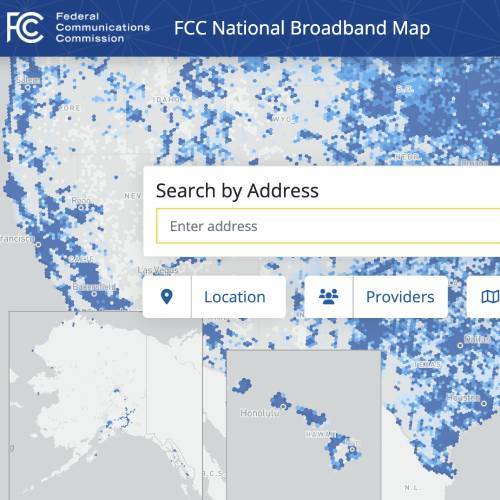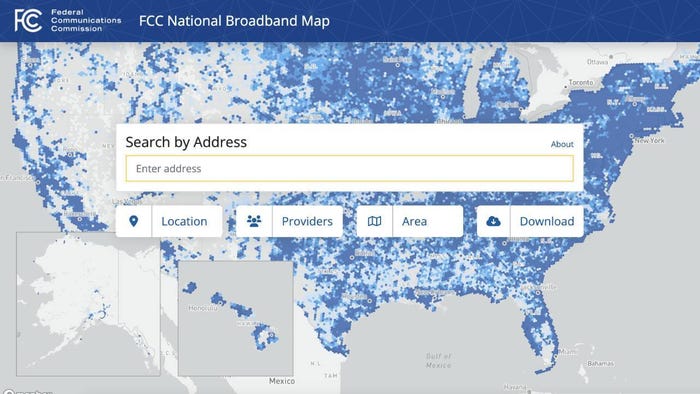FCC Chairwoman Jessica Rosenworcel reassured Congress that progress is being made on the national broadband map and 'most, if not all,' concerns will be addressed in the next version.

In a note responding to questions from Congress about the national broadband map, FCC Chairwoman Jessica Rosenworcel shared updates on the map's progress and said that version two "will address most, if not all, of the outstanding concerns."
The note comes amid concerns from Senators and other broadband stakeholders that the FCC's new broadband map contains too many inaccuracies that may impact each state's allocation from the NTIA's $43 billion Broadband Equity, Access and Deployment program (BEAD). The NTIA is expected to make those allocations on June 30.
In her note, Chairwoman Rosenworcel described the progress that has been made with the map since opening it up for bulk challenges in September 2022, noting that those challenges led to just 122,000 locations being added to the map.
Figure 1:  FCC national broadband map landing page.
FCC national broadband map landing page.
(Source: FCC)
According to Rosenworcel, during that period, government entities submitted 1.11 million challenges, which ultimately correlated to "less than 1% of the total number of locations identified in Version 1 of the Fabric," said Rosenworcel.
"Of these 1.11 million challenges, more than half were for locations that were either already included in Version 1 of the Fabric or that CostQuest, the vendor selected to develop the Fabric in accordance with the Broadband DATA Act, had independently identified through its own efforts for inclusion in Version 2 of the Fabric."
To that end, Rosenworcel made a point to say that additional locations on Version 2 of the map (currently available to governments and "fabric license holders") "are primarily the result ofCostQuest's ongoing efforts to update and improve the Fabric by refining the models and processes for creating the Fabric and using updated and improved input data sources such as new and more granular parcel data." CostQuest – the vendor contracted to create the broadband fabric – has "invested significant resources since the release of the first version of the Fabric to undertake manualreview above and beyond the baseline methodology to identify additional BSLs," according to Rosenworcel.
As such, she said, the second version incorporates "millions of adjustments to the data associated with locations that were already included in Version 1 of the Fabric, including, for example, changes to address fields, unit counts, secondary addresses, BSL status, building and land use codes, etc."
Rosenworcel's comments are notable given that the FCC has received criticism for its bulk challenge process and the challenge process it held for the general public, with many asking for more time to submit information. Rosenworcel's note seems to indicate that the more important adjustments to the map are happening on CostQuest's end.
"Meaningful changes have been made to the Fabric as a result of these efforts," she said. "For example, in Mineral County, Nevada (which includes part of the Walker River Tribal Lands) the number of BSLs increased 17.9% from Version 1 of the Fabric to Version 2.
"We believe Version 2 of the dataset, which reflects changes like these, will address most, if not all, of the outstanding concerns," said Rosenworcel.
Other progress she cited includes "significant increases" of tribal land representation on the map between versions one and two; and the state of New Mexico gaining 20,456 locations.
Team effort?
On availability challenges submitted during the brief public challenge process (for which the window for collecting challenge data before BEAD allocations closed January 13, 2023), Rosenworcel said the FCC received "over 4 million availability challenges" and that many of them "have already been resolved between the carrier and the challenger and will be reflected in future maps."
As she often does in her notes responding to these critiques, Rosenworcel also took a few opportunities to subtly remind Congress of its role in writing the legislation that dictates the FCC's mapping process.
"The map we have is a work that is always in progress, just as Congress designed it to be in the Broadband DATA Act," she said of the 2020 legislation that mandated the new mapping process. "I am confident that the BDC process we have established will help improve the map just as Congress envisioned."
Relatedly, also in the Senate's hands is the potential confirmation of a fifth FCC Commissioner. As President Biden's nominee Gigi Sohn stressed in her third hearing for the job this week, if confirmed, she would be able to assist the FCC in improving the broadband map before June 30.
"I would love to help improve that broadband map ... If I don't get confirmed at all, there's not going to be a fifth person on the FCC in time to do anything about those maps," said Sohn.
Related posts:
— Nicole Ferraro, editor, Light Reading, and host of "The Divide" podcast.
About the Author(s)
You May Also Like











